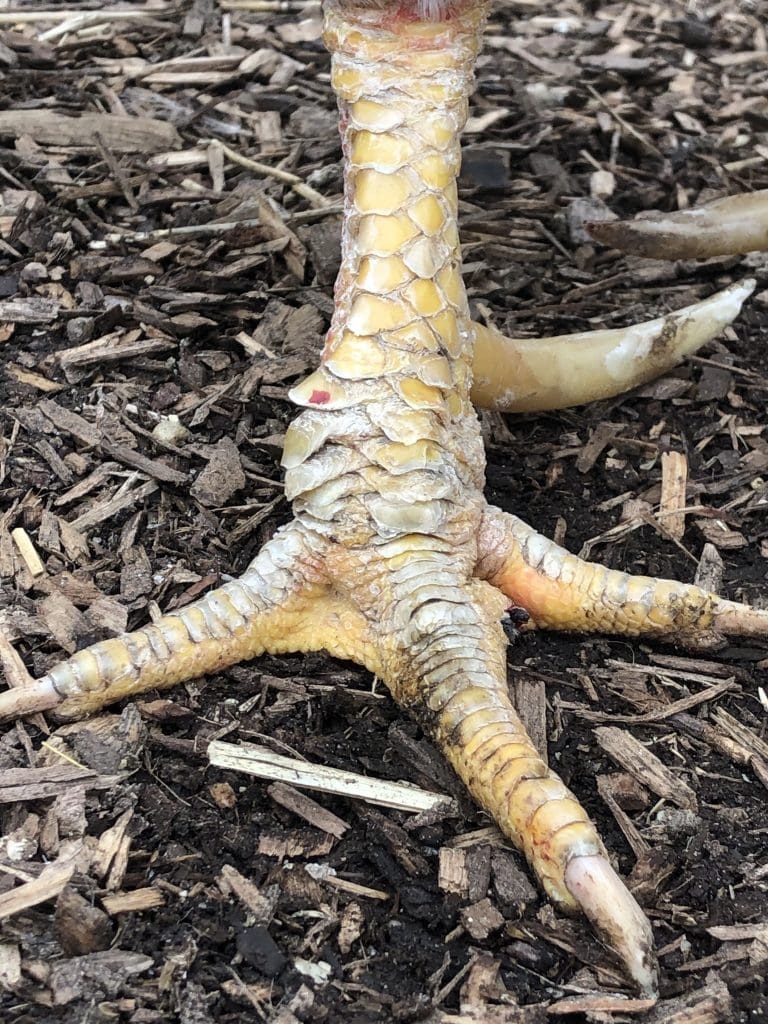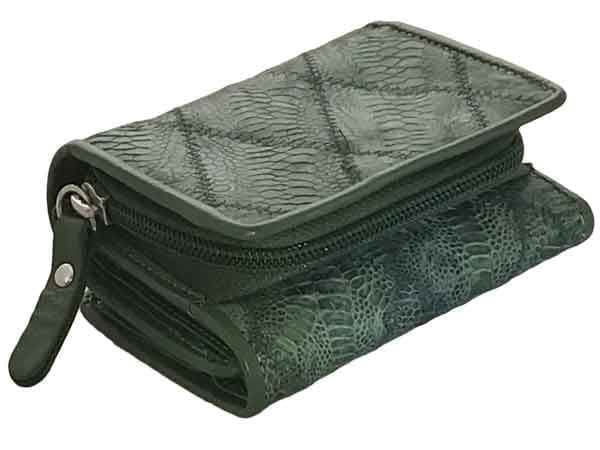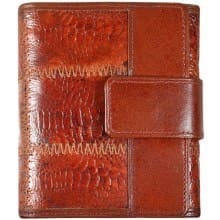Leather is the byproduct of meat industry, making it obvious that leather is obtained from major meat sources and chicken is the most consumed meat globally. Thus, chicken is also utilized for making leather. Bird leather is a  popular trend that will soon conquer the leather industry. Chicken leather is one of the popular bird leathers and chicken leg leather is the leather, specifically obtained from chicken’s leg for making small hides.
popular trend that will soon conquer the leather industry. Chicken leather is one of the popular bird leathers and chicken leg leather is the leather, specifically obtained from chicken’s leg for making small hides.
The chicken leg is obtainable in broad amounts as an offshoot product from the chicken industry. Owing to the absence of perception and automation, the maximum of the chicken legs is squandered by the chicken industry and the skins are not exploited. Consequently, an effort has been built in current research to explore the suitability of transforming chicken leg skins into leather and merchandise.
The untreated skin is then distinguished and transformed into a complete leather with the aid of using an acceptable tanning procedure and the affected chicken leg leather with stunning grain design has been used for the construction of extremely high-class leather goods. Analytical tests are conducted on the chicken leg pores and skin at contrasting phases of preparation.
of extremely high-class leather goods. Analytical tests are conducted on the chicken leg pores and skin at contrasting phases of preparation.
The leathers are then distinguished with distinctive scanning colorimetry and scanning electron-microscopic inspections. The toughness properties of the covering leather are additionally examined and are being described on paper. Optical estimation gives out that green tanning accompanied chrome tanning renders firm and complete leathers with an excellent elevated grain design to chrome tanning procedure and the duplicate is verified.
The major byproducts of the meat companies namely, hides and skins from home bovine and ovine animals are frequently changed into leather. Likewise, fowl legs are by-products of poultry preparing enterprise and the skins from fowl legs can be utilized as a uncooked cloth with the support of operating leather sector. Chicken farming business is the world’s 2d largest provider of meat, instantly after red meat and it has been appraised around 85 million tonnes of fowl meat was being produced at a point in 2010 across the globe.
The standard region of pores and skin is about 60 cm2 (0.065 sq ft) and this indicates approximately 6.5 billion sq ft of fowl leg skins may be transformed into leathers. This will add up to worldwide obtainability of organic material in a considerable manner, mainly, while the worldwide leather sector is demanding to enlarge their organic material base. But the trading exploitation of such affluent supply of organic material has not occurred due to lack of recognition and genuinely connect among the chicken manufacturers & the absence of satisfying automation. Generally, the fowl leg component is neither eaten by the humans nor transformed into valuable merchandises, maximum of it is a squander and therefore there is an extent to use the fowl leg skins as a possibility of organic material for the leather sector.
of fowl leg skins may be transformed into leathers. This will add up to worldwide obtainability of organic material in a considerable manner, mainly, while the worldwide leather sector is demanding to enlarge their organic material base. But the trading exploitation of such affluent supply of organic material has not occurred due to lack of recognition and genuinely connect among the chicken manufacturers & the absence of satisfying automation. Generally, the fowl leg component is neither eaten by the humans nor transformed into valuable merchandises, maximum of it is a squander and therefore there is an extent to use the fowl leg skins as a possibility of organic material for the leather sector.
Extensive Features of Chicken Leg Leather
The density, length, and breadth of tender leg pores and skin extend from 0.8 to 1.2mm, 13 to 15cm, and 3.5 to 4.5cm approximately. The distinctive and constant exterior texture or “grain” is a vital appealing characteristic of this leather, making it extra beneficial. However, the area is shorter. The leather with attractive grain texture (just like reptiles) can be utilized for the manufacturing of adorning fancy goods.
Uses of chicken leg leather
Chicken leather hides can be stitched jointly to produce large skins, these are created from the legs and feet of chickens, ostrich, duck, and turkey legs.


Chicken Leg Leather is utilized for making luxurious merchandise like handbags and wallets. It has many hides sewn jointly to construct functional goods and to produce the required merchandise.
The pores and skin texture on chicken leather in particular & with a dense grain texture on it.
Leather from chicken skin.
Skin from chickens’ legs and feet is likewise utilized to make leather. They are very compact surfaces. Skins from ostrich legs are used to make leather however they are significantly larger.
Bibliography
- https://www.researchgate.net/profile/RajanKarthikeyan/publication/318835913_An_investigation_on_chicken_leg_skin_for_the_preparation_of_fashionable_leather_and_leather_products/links/5a183fac0f7e9be37f975126/An-investigation-on-chicken-leg-skin-for-the-preparation-of-fashionable-leather-and-leather-products.pdf?origin=publication_detail
- https://prorestorers.co.uk/knowledgebase/chicken-leather/
- https://www.leather-dictionary.com/index.php/Chicken_leather
Image source
- https://i.pinimg.com/originals/20/88/7b/20887bb179933887879cd43fc5b04b64.jpg
- https://timbercreekfarmer.com/wp-content/uploads/2020/03/IMG-4457-768×1024.jpg
- https://www.leather-dictionary.com/images/thumb/Huenerbein-07.jpg/250px-Huenerbein-07.jpg
- https://prorestorers.co.uk/wp-content/uploads/2019/11/Chicken-Leg-Leather-Wallet.jpg
- https://realleather.com.au/pub/media/catalog/product/cache/image/700×560/e9c3970ab036de70892d86c6d221abfe/3/8/388ckn-green-2_1_1.jpg
- https://www.realmenswallets.com/wp-content/uploads/ostrich-wallets-genuine-ostrich-leather-burnt-orange-1.jpg
- https://encrypted-tbn0.gstatic.com/images?q=tbn:ANd9GcSiypx490Hca6XH5wC3FwQuG-fPcA10OmeWGWHmMa4Dg0_HFWIWCzYmp9vZgxo1mcAs5oo&usqp=CAU

